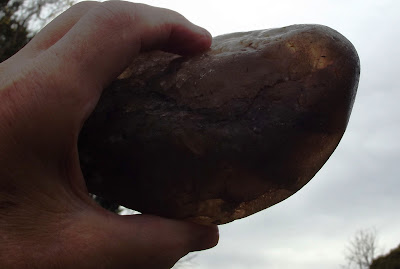| 0.5 carat facetted beryl |
It is on private
property (Highland Home) north of the Butler Mine/Mystery Face road, as marked
on the map, which locates both the mine’s location and the Butler Mine turnoff
from the Silent Grove road.
The map itself is taken from the Torrington
(Mole Tableland) map referred to in a previous Blog. As you will see, there are
numerous other mines and prospects nearby, both on the private land and in the
Conservation Area. Heffernan’s Mine is identified as 0272.
Rasmus (1969) reports on this location as follows:
“ML
52, Parish Highland Home, County Gough. This deposit was proved by shallow
shafts and trenches for a distance of about 400 feet. The deepest shaft was
about 40 feet. The lode strikes 030° in granite. The lode at the southern end
of the deposit consists of decomposed micaceous rock, with vugs containing
quartz, feldspar and mica crystal aggregates and occasional prisms of beryl.
The wolframite occurs in bunches and is not continuous. At the northern end of
the deposit the lode consists of aplite with small amounts of wolframite
distributed throughout.”
I have collected there several times and always
came back with small, but well-formed quartz crystals, and some pale green beryl.
| Specimens are 2-3 cm across |
Many people have been here over the years, so if you succeed in getting
permission to go into the site, you will have to work for your finds.
Please let us know in the comments section of any
previous finds you may have made here and if you succeeded in gaining access to
the site.
There is more information in the 1993 Minerama
book “Beryl” and in the Gemstones books downloadable from DIGS. Also worth downloading is the Mineral Industry
booklet “Tungsten No. 41, complied by PL Rasmus, April 1969”. The DIGS
reference is Industry 41.
Check out my You Tube channel here.
https://johnsbluemountainsblog.blogspot.com/2013/12/links-to-all-blog-entries-and-relevant.html
All Blue Mountains blogs and videos
All New England and other Geology blogs and videos




















